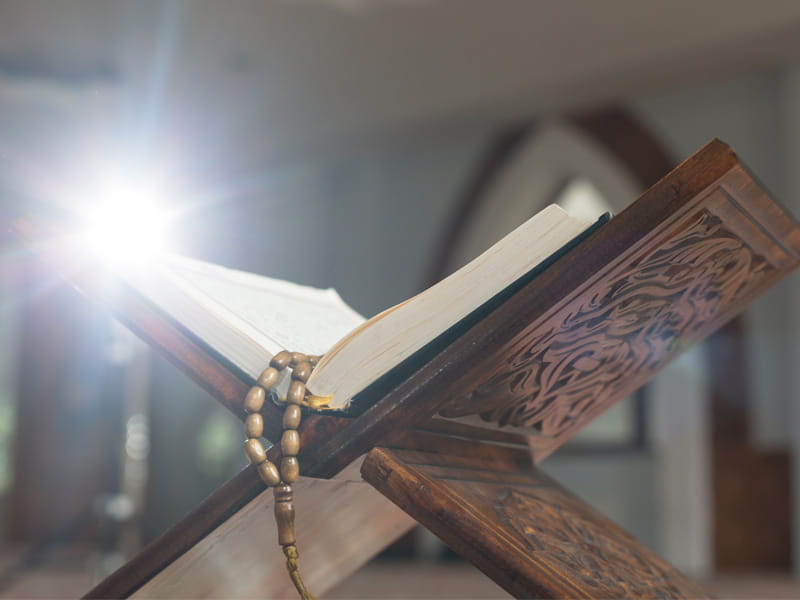Saudi benefactors who have broadly promoted Islamic culture in America have at times expected the donations to cultivate their particular strain of Islam, Wahhabism.
The effect may be to shape the faith on U.S. soil along the rigid lines of a fundamentalist creed practiced peacefully by millions in the Persian Gulf, yet which also drives Osama bin Laden's hatred of the West. Not everyone agrees, however, about the scope of Wahhabi influence.
``It has hindered the development of an American Islam, which is a shame,'' said Earle Waugh, a University of Alberta professor who studies Muslims in North America.
Muqtedar Khan, a political science professor in Adrian, Mich., disagreed. He said American Muslims have followed the same trajectory of the Puritans, from militant faith to melting-pot tolerance.
``There has been an argument between backward-looking Muslims - typical of any first generation - and forward-looking Muslims,'' Khan said. ``The Muslim democrats have won, and they control the mosques.''
Wahhabi donations to U.S. mosques have been estimated in the millions of dollars over some 20 years. Most American Muslim leaders agree a significant share of U.S. Islamic institutions have taken such money - at least one-third, perhaps a large majority.
The Saudi-based sect's most prominent adherents are that country's royal family. In recent years, Wahhabism has spread to Central Asia and Pakistan. Afghanistan's Taliban adhere to Wahhabi principles.
Saudi royals have distanced themselves from bin Laden. ``This guy does not belong to the Wahhabis,'' an angry Prince Alwaleed Bin Talal said in October as he toured the wreckage of the World Trade Center in New York.
``We need to defend traditional Muslims who want to take their religion and civilization back from the Wahhabis,'' said Stephen Schwartz, who has published books on European Islam.
Schwartz said Wahhabism has been particularly seductive among American converts who ``have an American tendency to be attracted to what is perceived as authentic'' - in this case, ancient and Arabian origins.
In interviews with Newsweek magazine, John Walker and his parents have cited exactly those elements as attracting him to Islam - a path that led him into battle alongside the Taliban. Some Muslims in the San Francisco area, where Walker converted, say Saudi emissaries recruit students for that country's Islamic universities among American converts.
The identification of the Sept. 11 terrorists as Wahhabi adherents who lived in this country has rattled American Muslims, said Ali Mazrui, a member of the board of the American Muslim Council, an umbrella body.
``There is a view being expressed now that we can't be convincing enough as patriotic Americans if positions we take are influenced from funds from the outside,'' Mazrui said.
Wahhabi donors say their motives were altruistic. They sought to sustain Islam among poor black Americans and immigrant communities - especially in the 1980s, when most of the money was spent.
``Very few attach strings to anything,'' said Shaker ElSayed, an official of the Falls Church, Va.-based Muslim American Society, who has brokered many such deals. ``The donors are interested in an Islam engaged with American society, not one that is isolated from it.''
Still, needy Islamic schools in the United States have accepted textbooks published in Saudi Arabia that teach the Islam of the region, one in which women are invisible and all modernization that does not directly advance Islam is seen as a curse.
And building on at least two California mosques has been halted because the Saudi funders and black communities disagreed on design, said Ayesha K. Mustafaa, editor of the Chicago-based Muslim Journal. The Wahhabi oppose decorative elements, including minarets.
Other expectations are more implicit.
``The expectation is that the communities receiving the money should view Wahhabism with more respect,'' aid Imam Hassan Al-Qazwini of the Islamic Center of America, the largest Muslim complex in Detroit and one that does not accept Saudi funds.
No one denies that conditions have been attached, but opinions sharply differ as to their impact.
Khan notes the endorsement President Bush won from most American Muslim organizations in last year's campaign - a level of political involvement in a Western democracy no Wahhabi would accept.
Yet one Washington-based Muslim leader says Wahhabi beliefs are popular with younger Muslims who reject their parents' moderation.
Young people are drawn to Wahhabism because ``they don't think except with their emotions and they are rebellious,'' Shaykh Muhammad Hisham Kabbani, head of the Islamic Supreme Council, told a State Department forum in 1999. John Voll, a Georgetown University professor, said Kabbani was overstating the case. Wahhabism itself is subject to moderate and extreme strains, he said.
``The Saudis have given millions to Harvard Law School,'' Voll said. ``Does that make it a Wahhabi institution?''
A multimedia presentation is available on the U.S. page at http://wire.ap.org http://wire.ap.org

